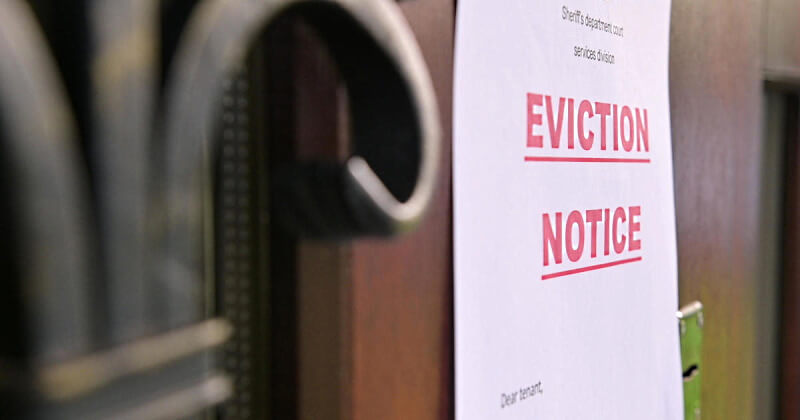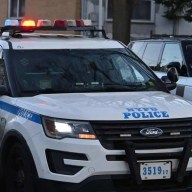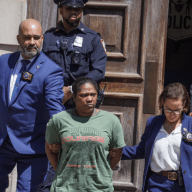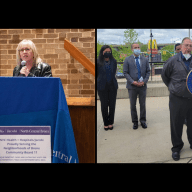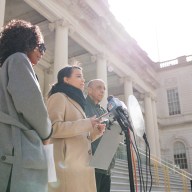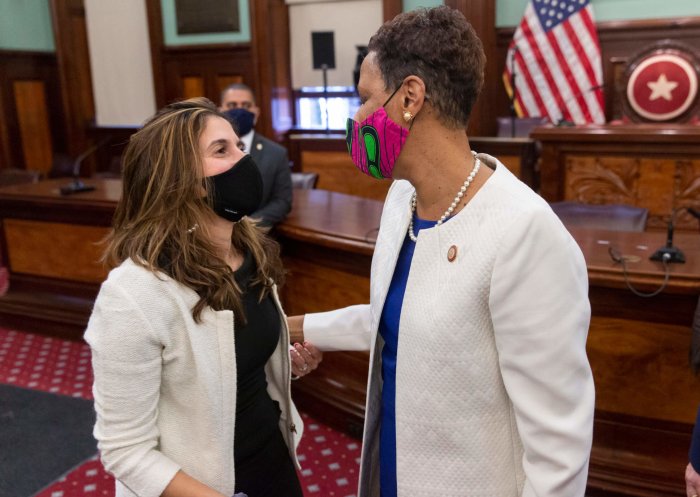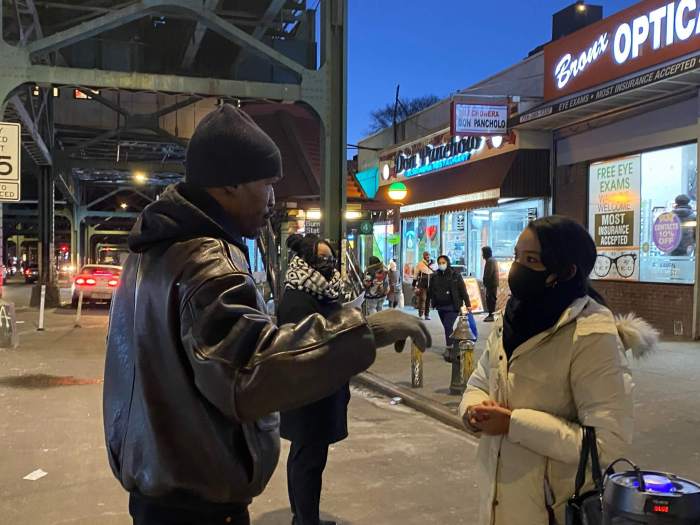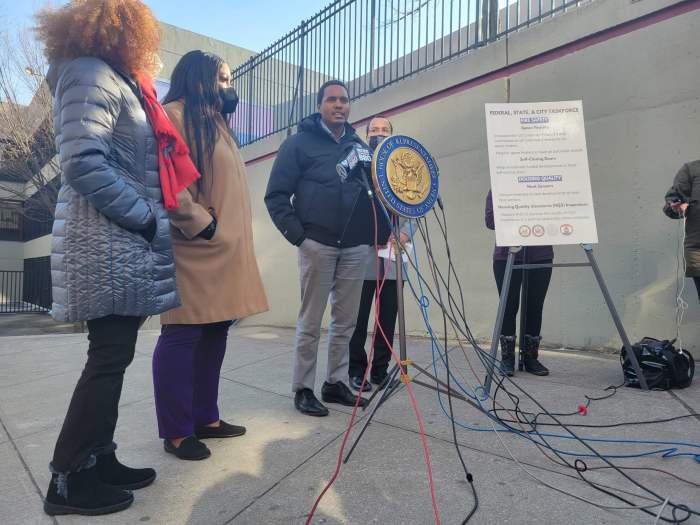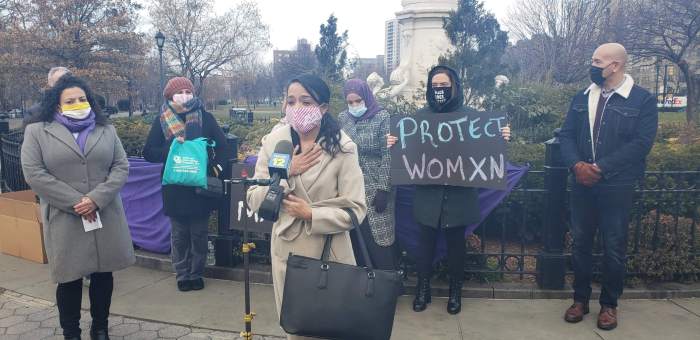Home is Arthur Avenue, the Hub, North Riverdale and Parkchester for just some of those who call themselves a Bronxite. But the price of living throughout the Bronx, along with anxieties of being evicted or priced out of their community, is a growing sentiment in the borough, with many asking, “can I afford to live here?”
“It’s impossible to live in New York City, anymore. I grew up here, and now I see myself getting left behind,” said Sandra Vargas, a single mother from the Bronx who was evicted during the pandemic from her apartment in Kingsbridge. “I was evicted during a pandemic, I’ve been living at my grandma’s house (in Norwood) ever since, but the reality is that this New York isn’t meant for me.”
For the third year in a row, the Bronx led the state in eviction filings, a percentage of household filings that went down to 2.1% in 2021, after rates hit 5.5% in 2020 and 13.2% in 2019. Eight of the 10 NYC districts with the highest rates of eviction filings are in the northernmost borough (Bronx districts 1-7 and 12); one is in Brooklyn (East Flatbush, District 17); and one is in Queens (Elmhurst/Corona, District 4), according to an Association for Neighborhood & Housing Development report released on Thursday.
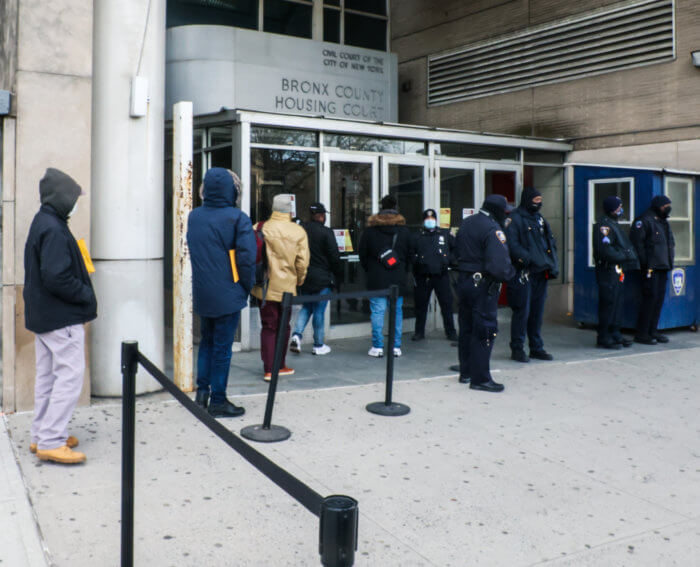
In the Bronx, most risk indicators were consistently high for the majority of community districts; these include rate of uninsurance, low area median income (AMI), percent of people who are rent-burdened, rate of tenant-initiated housing court cases, rate of immediately hazardous housing code violations, rate of unplanned NYCHA service outages, and low refinance loan approval rates.
Those same districts have high percentages of people of color and people with limited English proficiency, and oftentimes, Black and brown tenants are bearing the brunt of the worst housing outcomes, accruing more than double the maintenance violations and facing more than half as many evictions as their peers, researchers from the University Neighborhood Housing Program (UNHP) and nonprofit Local Initiatives Support Corporation found in their report.
“In 2019, 13% of households in the Bronx had eviction filings. While this figure has come down in recent years partly due to the eviction moratorium and The Right to Counsel Law, the Bronx continues to bear the brunt of predatory and discriminatory housing practices,” said Allia Mohammed, founder of NYC renters app Openigloo. “Bronx renters have shared reviews about their buildings and landlords, describing frequent turnover of owners, speculative buying, steep increases, and harassment tactics to get tenants out.”
With NYC renters owing approximately $1.6 billion in back rent and more than 32,000 evictions filed to date in 2022 across the city, politicians, housing advocates and renters are now fearful of the proposed rent increases from the Rent Guidelines Board. Last week, the city’s Rent Guidelines Board voted to increase the rent for the city’s 1 million stabilized apartments, subject to two public hearings in June before a final vote.
If approved, under the increase — the highest in 10 years — residents of those units would pay 2-4% more for one-year leases and 4-6% more on two-year leases.
“This kind of rent increase is definitely a shock for rent-stabilized renters as we haven’t seen a proposal this high since 2013. With inflation pushing 10% and wages not keeping pace, any increase in rent is going to put pressure on tenants across the 5 boroughs,” said Mohammed. “No matter how the Rent Guidelines Board votes next month, renters should be overcommunicative with their landlords in trying to come up with renewals that are tolerable.”
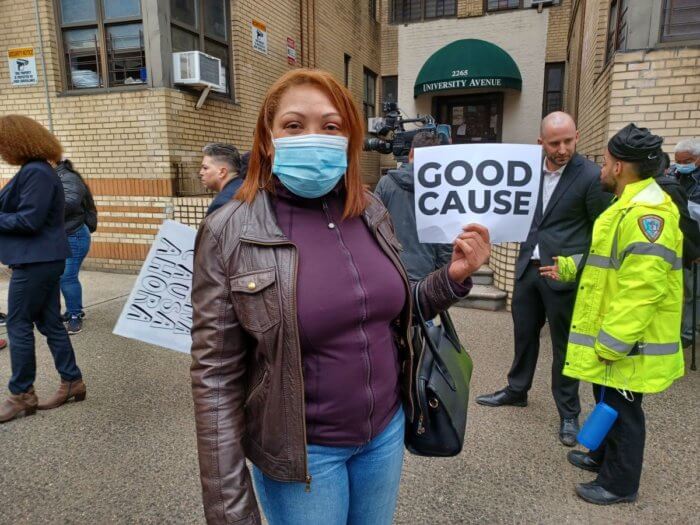
New York City has a well-established housing and homelessness crisis that is in part the result of new housing production running short of keeping up with population growth.
On Monday, councilmembers Rafael Salamanca and Pierina Sanchez — who have two of the highest eviction rates in their respective council districts — and housing advocates from the New York Housing Conference (NYHC) called on the Adams administration and the City Council to ramp up its affordable housing supply in every neighborhood throughout the city.
Affordable housing has been inequitable across the city, with just 569 new affordable homes produced since 2014, according to a new report and tracker from the NYHC, which began mapping affordable housing production district-by-district under the de Blasio administration. The total number of housing units in New York City in 2021 was 3,644,000, a net increase of about 175,000 over the 2017 stock, with a total of 551,300 units (15% of the city’s stock) in the Bronx, according to a tri-annual city housing and vacancy survey.
New affordable housing projects have stalled in the Bronx — notably in Salamanca’s South Bronx district and Councilmember Diana Ayala’s Mott Haven portion of her district — where communities are predominantly Black and Hispanic.
The Adams administration’s pledge is to fix the ongoing affordable housing crisis in lockstep with the city’s chronic homelessness.
In the accompanying capital budget, a separate plan from the expense budget, the mayor added $5 billion over 10 years for housing – $3.6 billion for the city Department of Housing Preservation and Development (HPD) and $1.4 billion for NYCHA – bringing the city’s total capital commitment for housing to $22 billion over the next decade. A final city budget is due by the July 1, the start of the new fiscal year.
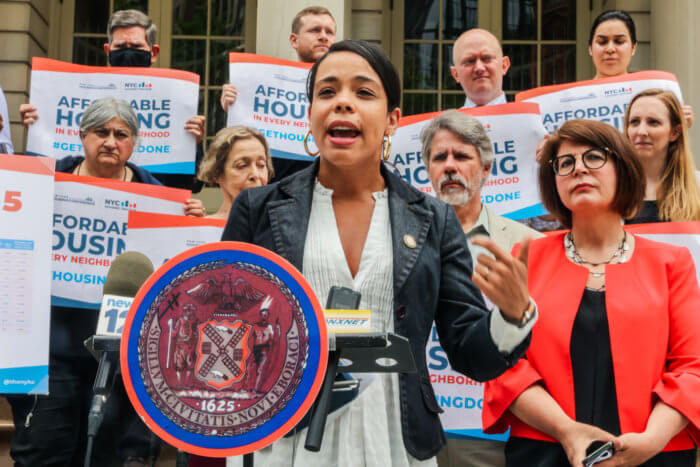
HPD Commissioner Alfredo Carrión, the former Bronx beep, conceded at a council hearing last week that the city will likely miss the necessary target for building and preserving affordable housing in the current calendar year – the city has built or preserved 11,000 units so far and will likely reach 16,000 units, he said, when it should be exceeding 30,000 units a year.
Carrión insisted that the funding allocated by the mayor is adequate to meet that demand.
But even the best-laid plans for affordable housing can fall on deaf ears, especially at community board meetings. Last month when a developer presented an affordable housing project to the members of Community Board 10 — which encompasses City Island, Co-op City, Pelham Bay, Throggs Neck and Westchester Square — it was met with shouts of “go home” and “do you live here?”
Even if a project makes it past the development phase, neighborhood groups often rally against 24-hour construction, to “cut and cover” techniques, to the proposed location of these projects — objections that amount to “not in my backyard” — some members of CB10 shared with the Bronx Times.
Sanchez, a Bronx Progressive and chair of the council’s Committee on Housing and Buildings, has been at the center of calls for increased affordable housing in the city, and for the mayor to double the proposed annual capital commitment toward housing and to add operational funds for various initiatives including running supportive housing for justice-involved people and foster care youth, among other demands.
She fears the decision to raise rent stabilized units will add to the housing, eviction and homeless crises that will take the city years to recover from.
“Critically, the investments continue to fall short of the Council’s call to radically reshape the city’s dedication to increasing the supply of new, deeply – and I’m going to again emphasize – deeply affordable housing,” said Sanchez, who was an urban planner and a housing advisor in the mayor’s office under Mayor Bill de Blasio before being elected to the council last year. “Representing the epicenter of the post-COVID eviction crisis, I am concerned this will fuel the crisis even further, further destabilizing already struggling communities and ultimately, costing the city more.”
Reach Robbie Sequeira at rsequeira@schnepsmedia.com or (718) 260-4599. For more coverage, follow us on Twitter, Facebook and Instagram @bronxtimes

